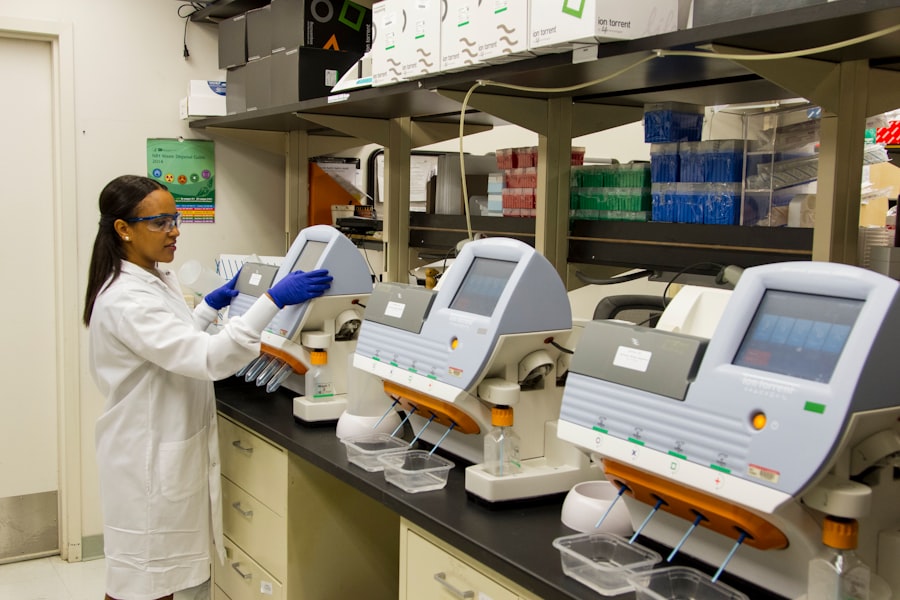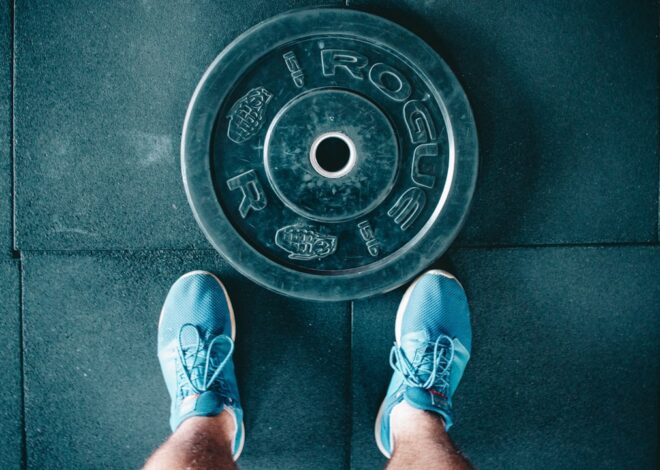
Genetic Fitness: Customizing Workouts with DNA
In recent years, the intersection of genetics and fitness has garnered significant attention, leading to a burgeoning field known as genetic fitness. This concept revolves around the idea that an individual’s genetic makeup can influence their physical performance, response to exercise, and overall health. As we delve deeper into the human genome, researchers are uncovering the intricate ways in which our DNA can dictate not only our predisposition to certain health conditions but also our potential for athletic prowess.
The implications of this knowledge are profound, as they suggest that a one-size-fits-all approach to fitness may be outdated. Genetic fitness is not merely a theoretical construct; it has practical applications that can revolutionize how individuals approach their health and fitness regimens. By understanding the genetic factors that contribute to physical performance, individuals can tailor their workouts to align with their unique biological profiles.
This personalized approach promises to enhance results, reduce the risk of injury, and foster a more sustainable fitness journey. As we explore the nuances of genetic fitness, it becomes clear that the future of exercise and health may lie in our DNA.
Key Takeaways
- Genetic fitness plays a crucial role in determining an individual’s response to exercise and overall health.
- DNA influences an individual’s fitness level, muscle composition, and response to different types of exercise.
- Understanding genetic makeup can help in customizing workouts to maximize results and prevent injury.
- Tailoring workouts to DNA can lead to improved performance, faster recovery, and reduced risk of injury.
- Genetic testing can provide valuable insights into an individual’s genetic fitness and guide workout customization.
Understanding DNA and Fitness
Genetic Factors in Athletic Performance
Specific genes have been identified that correlate with athletic performance, such as those involved in muscle composition, oxygen uptake, and recovery rates. For instance, variations in the ACTN3 gene have been linked to differences in muscle fiber composition, which can affect an individual’s sprinting ability versus endurance capacity.
Genetic Response to Exercise
DNA also plays a crucial role in how our bodies respond to different types of exercise. Some individuals may find that they excel in high-intensity interval training (HIIT), while others may thrive in endurance-based activities like long-distance running or cycling.
Optimizing Training Regimens
This variability can be attributed to genetic factors that influence energy metabolism and muscle recovery. Understanding these genetic predispositions allows individuals to make informed decisions about their training regimens, optimizing their efforts based on what their bodies are naturally inclined to do.
The Role of Genetics in Workout Customization

The customization of workouts based on genetic information is a groundbreaking development in the fitness industry. By analyzing specific genetic markers, trainers and fitness enthusiasts can create personalized workout plans that cater to an individual’s strengths and weaknesses. For example, someone with a genetic predisposition for fast-twitch muscle fibers may benefit from strength training and explosive movements, while another individual with a propensity for slow-twitch fibers might find greater success in endurance training.
Furthermore, genetics can influence recovery times and injury susceptibility. Certain genetic variants can affect how quickly muscles repair after intense workouts or how prone an individual is to injuries such as strains or sprains. By understanding these genetic factors, individuals can adjust their training intensity and recovery protocols accordingly.
This level of customization not only enhances performance but also minimizes the risk of overtraining and burnout, leading to a more enjoyable and sustainable fitness experience.
Benefits of Tailoring Workouts to DNA
| Benefits of Tailoring Workouts to DNA |
|---|
| 1. Personalized fitness plans |
| 2. Better understanding of body’s response to exercise |
| 3. Enhanced performance and results |
| 4. Reduced risk of injury |
| 5. Improved motivation and adherence to exercise |
The benefits of tailoring workouts to an individual’s DNA are manifold. First and foremost, personalized training regimens can lead to more efficient results. When workouts align with an individual’s genetic strengths, progress can be accelerated, whether that means building muscle mass, improving cardiovascular endurance, or enhancing overall athletic performance.
This targeted approach can also boost motivation; seeing tangible results from a customized program can encourage individuals to remain committed to their fitness goals. Additionally, tailoring workouts based on genetic insights can significantly reduce the likelihood of injury. By understanding one’s genetic predispositions, individuals can avoid exercises that may put undue stress on vulnerable areas of their bodies.
For instance, someone with a genetic tendency toward joint instability might need to focus on strengthening surrounding muscles rather than engaging in high-impact activities that could exacerbate their condition. This proactive approach not only safeguards physical health but also fosters a positive relationship with exercise by minimizing negative experiences associated with injury.
How to Test for Genetic Fitness
Testing for genetic fitness has become increasingly accessible due to advancements in biotechnology and the proliferation of direct-to-consumer genetic testing services. Companies like 23andMe and AncestryDNA offer tests that analyze specific genetic markers related to fitness traits. These tests typically involve a simple saliva sample that is sent to a laboratory for analysis.
Once processed, individuals receive reports detailing their genetic predispositions regarding various aspects of fitness, such as muscle composition, recovery rates, and even potential dietary needs. However, it is essential to approach these tests with a critical mindset. While they provide valuable insights into one’s genetic makeup, they are not definitive predictors of success or failure in any fitness endeavor.
Environmental factors such as lifestyle choices, nutrition, and mental resilience also play significant roles in determining athletic performance. Therefore, while genetic testing can inform workout customization, it should be viewed as one piece of a larger puzzle rather than the sole determinant of fitness potential.
Implementing DNA-Based Workouts

Implementing DNA-based workouts requires a thoughtful approach that integrates genetic insights into practical training strategies. After receiving genetic test results, individuals should work with fitness professionals who understand how to interpret these findings effectively. Trainers can help translate genetic data into actionable workout plans that consider an individual’s unique strengths and weaknesses.
For example, if a person’s genetic profile indicates a predisposition for endurance activities, their workout plan might emphasize longer cardio sessions interspersed with strength training focused on building muscular endurance rather than sheer power. Conversely, someone with a genetic inclination toward strength might engage in heavier lifting with lower repetitions while incorporating explosive movements like plyometrics. This tailored implementation not only enhances performance but also ensures that individuals remain engaged and motivated by participating in activities they are naturally suited for.
Case Studies: Success Stories of DNA-Based Workouts
Numerous success stories illustrate the transformative potential of DNA-based workouts. One notable example is that of an amateur athlete who struggled with inconsistent performance in marathons despite rigorous training. After undergoing genetic testing, it was revealed that she had a genetic predisposition for fast-twitch muscle fibers rather than endurance capabilities.
Armed with this knowledge, she shifted her focus from long-distance running to sprinting and interval training. Within months, her performance improved dramatically; she not only enjoyed her workouts more but also achieved personal bests in shorter races. Another compelling case involves a professional bodybuilder who utilized genetic insights to refine his training regimen.
After testing revealed specific markers associated with muscle recovery and growth potential, he adjusted his nutrition and workout schedule accordingly. By incorporating more rest days and focusing on nutrient timing around his workouts based on his genetic profile, he experienced significant gains in muscle mass while reducing his risk of injury during intense training cycles.
Future of Genetic Fitness: Advancements and Possibilities
The future of genetic fitness holds exciting possibilities as research continues to evolve and technology advances. As our understanding of the human genome deepens, we may see the development of more sophisticated testing methods that provide even greater insights into individual fitness profiles. This could lead to highly personalized workout programs that adapt over time based on ongoing assessments of an individual’s progress and changing needs.
Moreover, advancements in artificial intelligence and machine learning could facilitate the creation of dynamic training platforms that analyze real-time data from wearables and other fitness technologies alongside genetic information. Such systems could offer tailored recommendations for workouts, nutrition plans, and recovery strategies based on an individual’s unique biological makeup and current performance metrics. As we look ahead, the integration of genetics into fitness is poised to redefine how we approach health and wellness.
With the potential for personalized training regimens that align with our DNA, individuals may find themselves empowered to achieve their fitness goals more effectively than ever before. The journey toward optimal health will increasingly become a collaborative effort between our biology and our choices—an exciting frontier in the realm of personal fitness.
FAQs
What are DNA-based fitness plans?
DNA-based fitness plans are personalized workout and nutrition plans that are tailored to an individual’s genetic makeup. By analyzing a person’s DNA, specific genetic variations related to fitness, metabolism, and nutrition can be identified, allowing for a customized approach to exercise and diet.
How do DNA-based fitness plans work?
DNA-based fitness plans work by analyzing an individual’s genetic markers related to fitness, metabolism, and nutrition. This analysis provides insights into how a person’s body responds to different types of exercise, nutrients, and dietary patterns. Based on this information, personalized workout and nutrition plans can be created to optimize results.
What are the benefits of DNA-based fitness plans?
The benefits of DNA-based fitness plans include a more personalized approach to fitness and nutrition, which can lead to more effective and efficient results. By understanding how an individual’s body responds to exercise and food, DNA-based fitness plans can help optimize training, prevent injury, and improve overall health and wellness.
Are DNA-based fitness plans effective?
Research suggests that DNA-based fitness plans can be effective in helping individuals achieve their fitness and health goals. By customizing workouts and nutrition based on genetic information, individuals may experience improved performance, better recovery, and enhanced overall well-being.
How can I get a DNA-based fitness plan?
To get a DNA-based fitness plan, individuals can typically purchase a DNA testing kit from a reputable provider, such as a genetic testing company or a fitness and wellness organization. After providing a DNA sample, the results are analyzed, and a personalized fitness plan is created based on the individual’s genetic profile.

